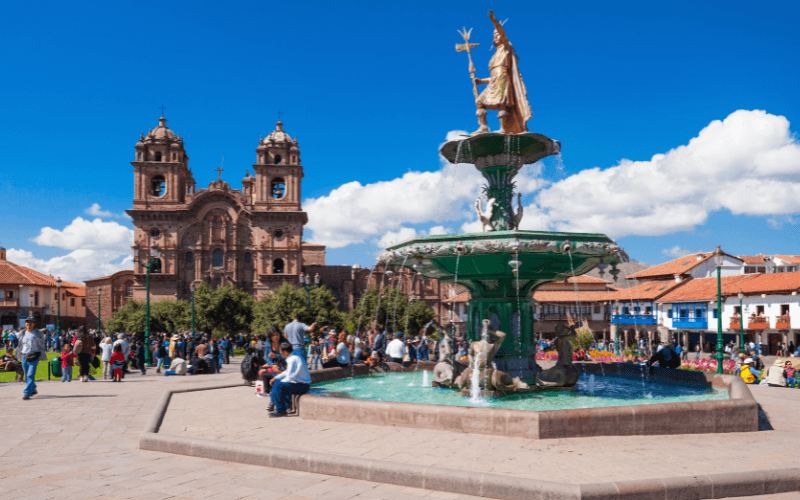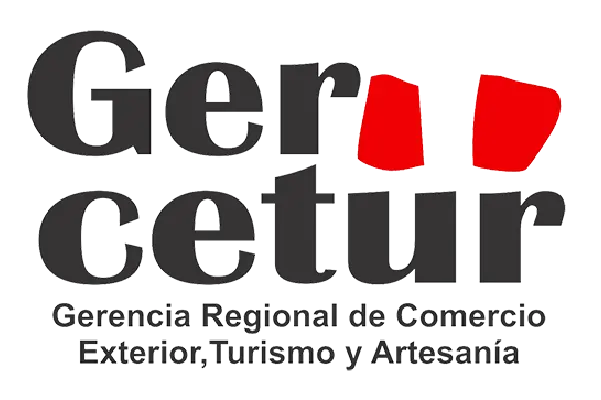16 Day Discovering Last Capital of the Incas
Overview
Discover the hidden wonders of the Vilcabamba region on this extraordinary 16-day trek, following the ancient paths of the Incas. This adventure takes you through breathtaking landscapes, from towering Andean peaks to lush cloud forests, as you make your way to the spectacular ruins of Choquequirao, often called the “sister city of Machu Picchu.” Along the way, you’ll encounter remote archaeological sites, cross high mountain passes, and descend into verdant valleys teeming with life.
Beyond its stunning scenery, this trek offers a deep cultural and historical experience. You’ll walk through traditional villages, where the customs of the Andean people have remained unchanged for centuries. The journey also takes you to significant Inca sites such as Vitcos and Espiritu Pampa, places steeped in history that played a crucial role during the last days of the Inca Empire.
Designed for seasoned hikers looking for an immersive and challenging adventure, this expedition combines history, culture, and nature in one unforgettable journey. With expert guides leading the way, you’ll camp under star-filled skies, witness breathtaking sunrises over the Andes, and complete an epic trek that few travelers ever experience.
Highlights:
- Explore the breathtaking ruins of Choquequirao, the “sister city of Machu Picchu.”
- Trek through the remote and stunning Vilcabamba region, far from the crowds.
- Visit significant Inca sites, including Vitcos and Espiritu Pampa.
- Cross high-altitude passes with panoramic views of the Andes.
- Descend into lush cloud forests and tropical valleys filled with diverse flora and fauna.
- Spot unique wildlife, including the Gallito de las Rocas (Cock of the Rock), Peru’s national bird.
- Experience authentic Andean culture in remote villages along the way.
- Camp under star-lit skies in spectacular natural settings.
- Enjoy a challenging yet rewarding adventure led by expert guides.
Price per person:
$ –.00 USDDifficulty: Challenging – For experienced hikers due to high altitudes and long days of trekking.
Altitude: From 1,500m (4,921ft) to 4,600m (15,091ft).
Duration: 16 days / 15 nights.
Best Time: April to October, the dry season.
Accommodation: Camping with meals provided.
Transport: Private van for return from Chiwankiri to Cusco.
ItineraryContinuing our journey, we will pass through the picturesque towns of Conoc and Crahuasi until we reach Saywite, where we will explore the enigmatic Saywite Ceremonial Stone. This enormous carved rock, featuring more than 200 relief figures, is considered a three-dimensional map of Inca hydraulic systems and an important center for water worship.
From Saywite, we will begin our descent to Cachora, a small Andean town surrounded by breathtaking mountain landscapes. Here, we will set up our campsite for the night, preparing for the start of our hike the next day.
Meals: Lunch / Dinner
Along the way, we’ll pass through the towns of Santa Rosa and Marampata, where we can rest and take in the stunning views of the Apurímac canyon. As we gain altitude, the scenery transforms from arid slopes to lush cloud forest, home to a variety of flora and fauna, including orchids and the majestic Andean condor.
In the afternoon, we will arrive at our campsite in Raqaypata, strategically located near the impressive ruins of Choquequirao. After settling in, we will have the opportunity to explore part of this remote Inca citadel, often referred to as the “sister city” of Machu Picchu. With fewer visitors, Choquequirao offers a unique and serene atmosphere, allowing us to immerse ourselves in its history and significance.
Meals: Breakfast / Lunch / Dinner
From the pass, we’ll begin our descent to Pinchiunuyuc, a beautiful spot where we’ll stop for lunch and take in the tranquility of the Andean landscape. Afterward, we’ll continue our descent toward Rio Banco, located at 1,800m (5,906ft). This section of the hike will take us through lush forests and alongside streams, offering a complete contrast to the high-altitude landscapes we’ve encountered so far.
We’ll set up camp along the river for the evening, where we can relax and enjoy the sounds of nature, preparing for another day of adventure.
Meals: Breakfast / Lunch / Dinner
The ascent will be physically demanding, but the historical significance of the mine and the breathtaking vistas make the effort worthwhile. After visiting the mine, we’ll take a moment to enjoy the views and rest before continuing our journey.
Meals: Breakfast / Lunch / Dinner>
As we continue our hike, we will pass through patches of agricultural land, where local farmers cultivate crops in the high-altitude environment. These landscapes offer a glimpse into the resilience and ingenuity of the people living in this remote region.
Our destination for the day will be the picturesque valley of Yanama, located at 3,400m (11,155ft). We will set up camp near the local high school, enjoying the serene atmosphere of the valley as we rest and prepare for the next leg of our journey.
Meals: Breakfast / Lunch / Dinner
The ascent to the pass is challenging, but the panoramic views from the top will make the effort worthwhile. From Choquetakarpo, we will take in breathtaking vistas of the surrounding mountains and valleys. Afterward, we will begin our descent toward Kelkamachay, where we will set up camp for the evening, ready to rest and enjoy the tranquility of the area.
Meals: Breakfast / Lunch / Dinner
As we walk along the path, we’ll also have the opportunity to view sections of the Vilcabamba Trail, a historic route that once connected the Inca Empire. Our trek will take us to an altitude between 3,500m–3,800m (11,483–12,467ft), where the views become even more breathtaking as we gain elevation.
We will arrive in Kollpaq in the early evening and set up camp, ready to rest after a day of incredible scenery and exploration.
Meals: Breakfast / Lunch / Dinner
In our case, Huancacalle will also serve as the base camp for our return trip to the Vilcabamba Valley. It offers a peaceful setting for the evening as we prepare for the final leg of our journey.
Meals: Breakfast / Lunch / Dinner
After another hour of trekking, we’ll arrive at Ñustahispanan, an important archaeological site. We will enjoy a guided tour of the ruins, where you’ll learn about the fascinating history and significance of this place. Afterward, we will return to our base camp to rest and reflect on the day’s exploration.
Meals: Breakfast / Lunch / Dinner
Later, we’ll visit Nusta hisp’anan (Yurac Rumi), a historical site with significant cultural and archaeological value. Along the way, we will enjoy the beautiful countryside, immersed in the serenity of the Andean landscape.
In the evening, we’ll make our way to Qollpaq’sa, where we’ll set up camp for the night, reflecting on the incredible sights and experiences of the day.
Meals: Breakfast / Lunch / Dinner
Afterward, we’ll begin our descent to Ututo, where we’ll set up camp for the night. In the evening, we’ll take the opportunity to do some fishing in the nearby river, enjoying the peaceful environment and the chance to relax.
Meals: Breakfast / Lunch / Dinner
We’ll enjoy lunch on the shores of the Pampaconas River, surrounded by the natural beauty of the area. After a short rest, we’ll continue our trek to Vista Alegre, a peaceful spot where we’ll set up camp for the evening and rest after a rewarding day of exploration.
Meals: Breakfast / Lunch / Dinner
As we continue hiking across the valley, we’ll make our way to Tunkimayu, another scenic location, before continuing on to Concebidayoc, our destination for the day.
Meals: Breakfast / Lunch / Dinner
Meals: Breakfast / Lunch / Dinner
Our journey will bring us to Chiwankiri, the site of our last evening in the outdoors, where we will enjoy a well-deserved rest surrounded by the serenity of nature.
Meals: Breakfast / Lunch / Dinner
On Day 16, we’ll begin our return journey by private van, traveling through breathtaking Andean landscapes. Our route will take us through the city of Kiteni, a gateway to the Amazonian lowlands, before ascending into the stunning Lares Valley, known for its picturesque scenery and rich cultural heritage.
We’ll continue our drive through Amparaes and Calca, two charming towns nestled in the Sacred Valley. Finally, we’ll make the final ascent to the historic city of Cusco, bringing our unforgettable adventure through the Vilcabamba region to a close.
Meals: Breakfast / Lunch / Dinner
- briefing.
- Private Transportation in and out: Cusco – Limatambo / Chiwankiri – Cusco.
- Private Guide: 2 guides for groups over 12 people.
- Cook: In charge of meal preparation.
- Horsemen and horses: Carry tents, cooking equipment and also carry backpacks, sleeping bags and mattresses (Max. 15 kilos/ 33 lbs per person).
- Emergency Horse: Just in case someone needs help.
- Meals: as mentioned in the itinerary
- Equipment: tents ( 2 people in each 3-person-capacity ), Therm-a-rest sleeping pad, dinner tent, special biodegradable bathroom tent, kitchen tent, shower tent, tables and chairs, table settings, first aid kit, including emergency oxygen bottle.
- International and domestic flights and taxes.
- Travel Insurance (compulsory)
- Gratitudes.
To ensure you are fully prepared for this adventure, please pack the following items:
- Clothing:
- Lightweight, moisture-wicking clothing for hiking
- Warm layers (fleece or down jacket for cold nights)
- Waterproof jacket and pants
- Sun protection clothing (wide-brimmed hat, UV-protective clothes)
- Hiking boots (sturdy, broken-in, waterproof)
- Sandals or camp shoes for after hiking
- Comfortable socks (both regular and wool for warmth)
- Gloves and hat for cold temperatures (especially at higher altitudes)
- Personal Gear:
- Small daypack (for carrying essentials during the hike)
- Sleeping bag (rated for cold temperatures, ideally down or synthetic for warmth)
- Sleeping mat (inflatable or foam for comfort)
- Headlamp with extra batteries
- Camera and extra memory cards
- Water bottle or hydration system (at least 2 liters capacity)
- Personal snacks (energy bars, trail mix)
- Personal hygiene items (toothbrush, toothpaste, wet wipes, biodegradable soap)
- Health and Safety:
- First aid kit (with blister treatment, pain relievers, band-aids, etc.)
- Personal medications (if needed)
- Altitude sickness medication (consult your doctor before the trek)
- Sunscreen (SPF 30 or higher) and lip balm with SPF
- Insect repellent (preferably DEET-free)
- Water purification tablets or water filter
- Optional Items:
- Binoculars for bird watching
- Lightweight trekking poles
- Personal entertainment (books, journal, etc.)
- Camera tripod for landscape photography
Please keep in mind that all personal belongings should fit into a small duffel bag or backpack, as porters and pack animals will carry your gear. Limit your pack to essential items only to ensure comfort during the trek.
Location for: 16 Days Discovering Last Capital of the Incas
- 1. What is the difficulty level of this trek?
The trek is considered challenging, suitable for experienced hikers due to the high-altitude passes, long days of trekking, and diverse terrain. A good level of fitness is required. - 2. What is the best time to go on this trek?
The best time to trek is during the dry season, from April to October, when the weather is stable, and the trails are in the best condition for hiking. - 3. How high will we be trekking?
The trek reaches altitudes ranging from 1,500m (4,921ft) to 4,600m (15,091ft), with several challenging ascents and descents along the way. - 4. Is this trek fully supported?
Yes, the trek is fully supported. You will have a team of experienced guides, porters, and pack animals to carry your equipment and supplies, ensuring a smooth and comfortable journey. - 5. Will I need to carry my own gear?
No, you will not need to carry your gear. Porters and pack animals will carry your camping equipment and personal items. You will only need to carry a small day pack with personal essentials. - 6. What kind of accommodation is provided during the trek?
Accommodation is camping-based. We provide comfortable tents, and all meals will be prepared by our professional trekking chefs using fresh, local ingredients. - 7. Is there a risk of altitude sickness on this trek?
Due to the high altitudes, there is a risk of altitude sickness. We recommend acclimatizing before the trek and drinking plenty of water during the hike. Our guides are trained to recognize and handle altitude-related issues.

